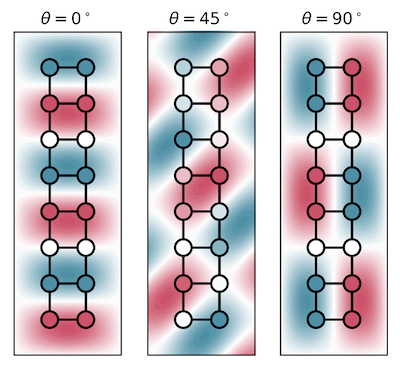Unveiling and Manipulating Hidden Symmetries in Graphene Nanoribbons

N. V. Tepliakov, J. Lischner, E. Kaxiras, A. A. Mostofi and M. Pizzochero
Symmetry is an ubiquitous concept in physics that helps us rationalise a wide spectrum of physical properties and phenomena. Certain materials exhibit a higher degree of symmetry than is evident from their spatial or atomic structure. In such cases, it is said that these materials feature a hidden symmetry, which reveals itself in a higher-dimensional space. In a paper published in Physical Review Letters, working in collaboration with researchers at Harvard University, we discovered the existence of a previously overlooked hidden symmetry in graphene nanoribbons, a class of carbon-based materials that hold promise for future nanoelectronics beyond silicon. We showed that the breaking of this hidden symmetry is responsible for the semiconducting properties of graphene nanoribbons, thus providing a novel microscopic explanation of their electronic structure. Furthermore, we demonstrated that control of this hidden symmetry by straining the nanoribbon results in the emergence of topological and semimetallic phases.
Phys. Rev. Lett. 130, 026401 (2023)
This work was part of the PhD work of Nikita Tepliakov and was in collaboration with colleagues Michele Pizzochero and Efthimios Kaxiras at Harvard University.
